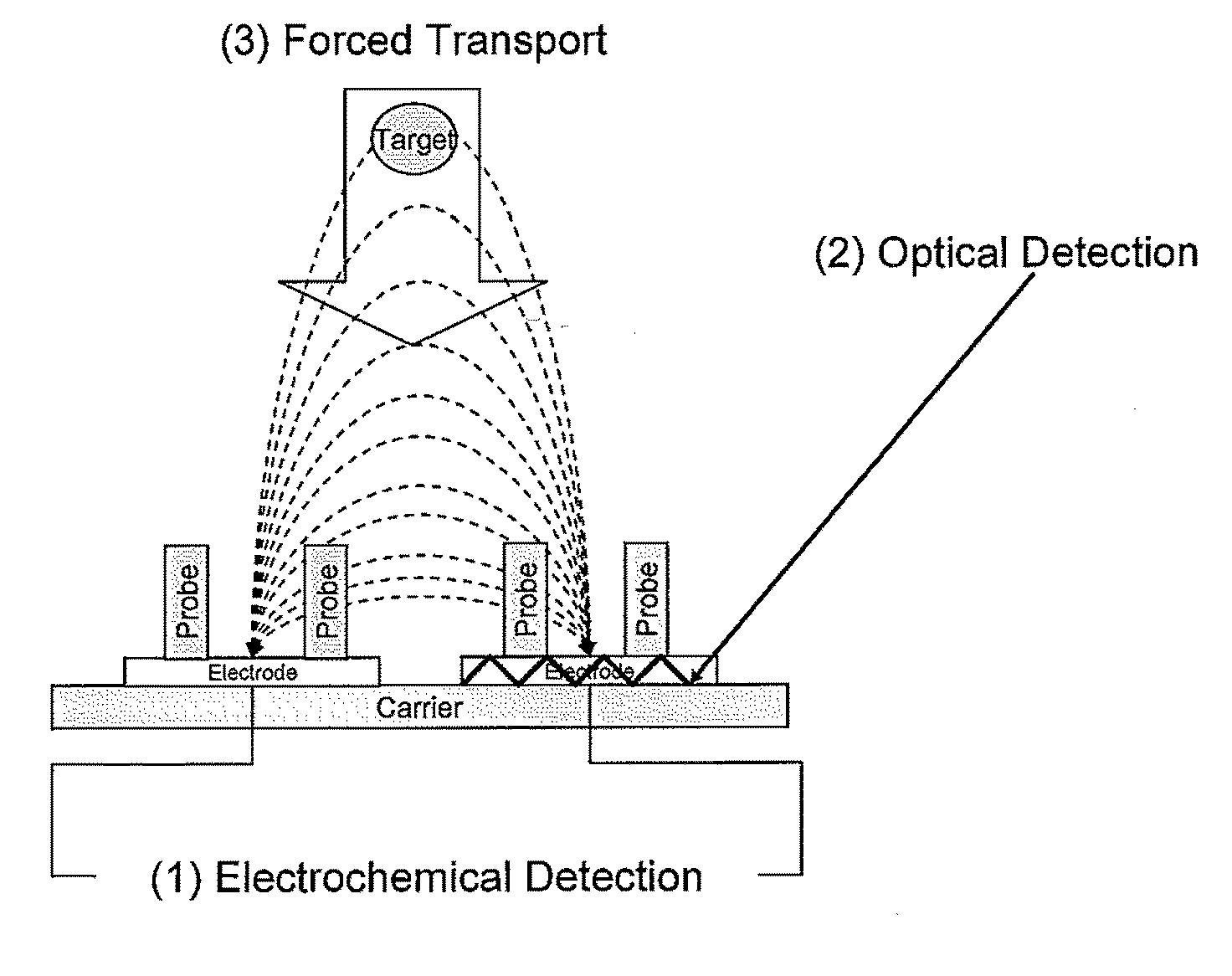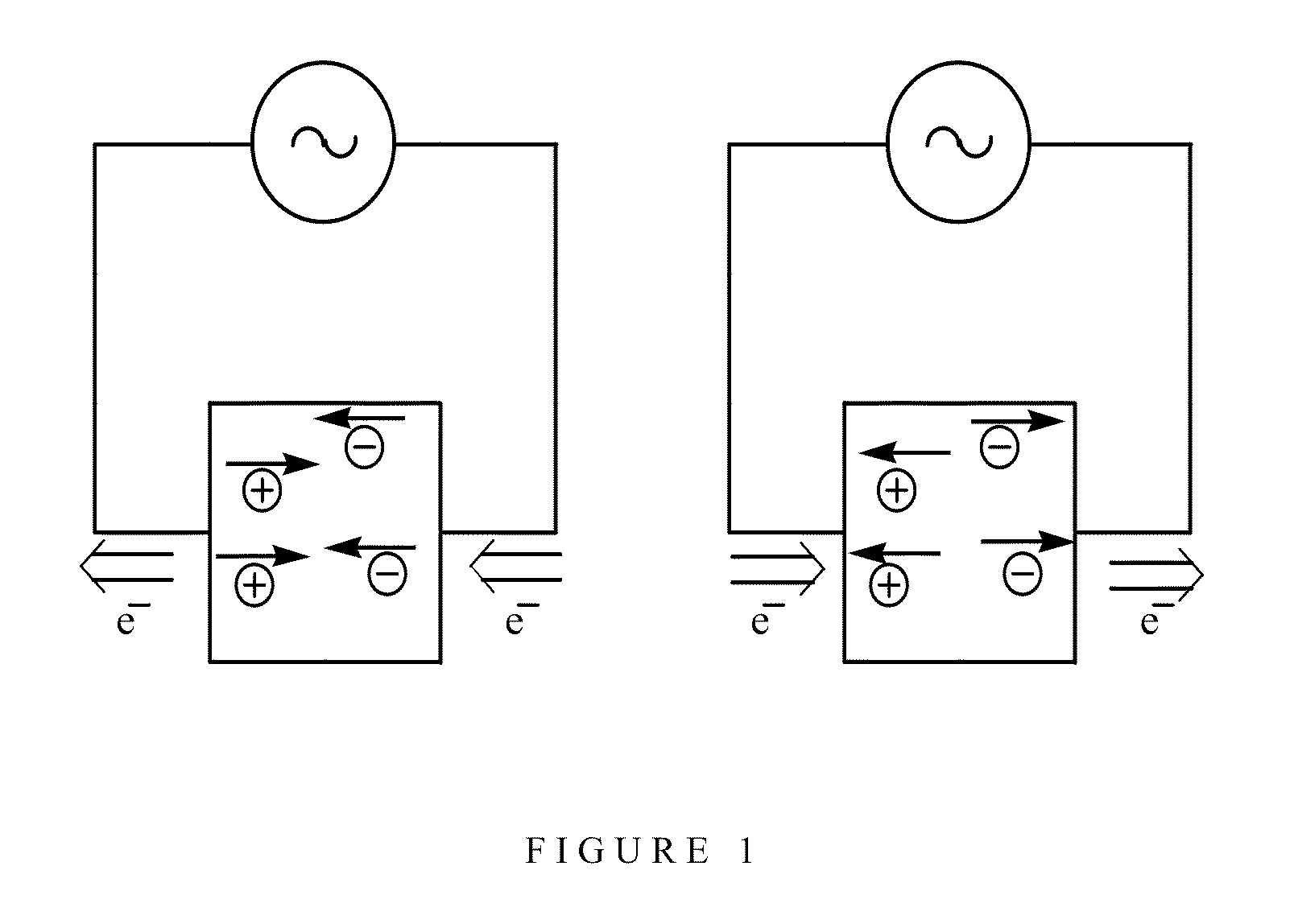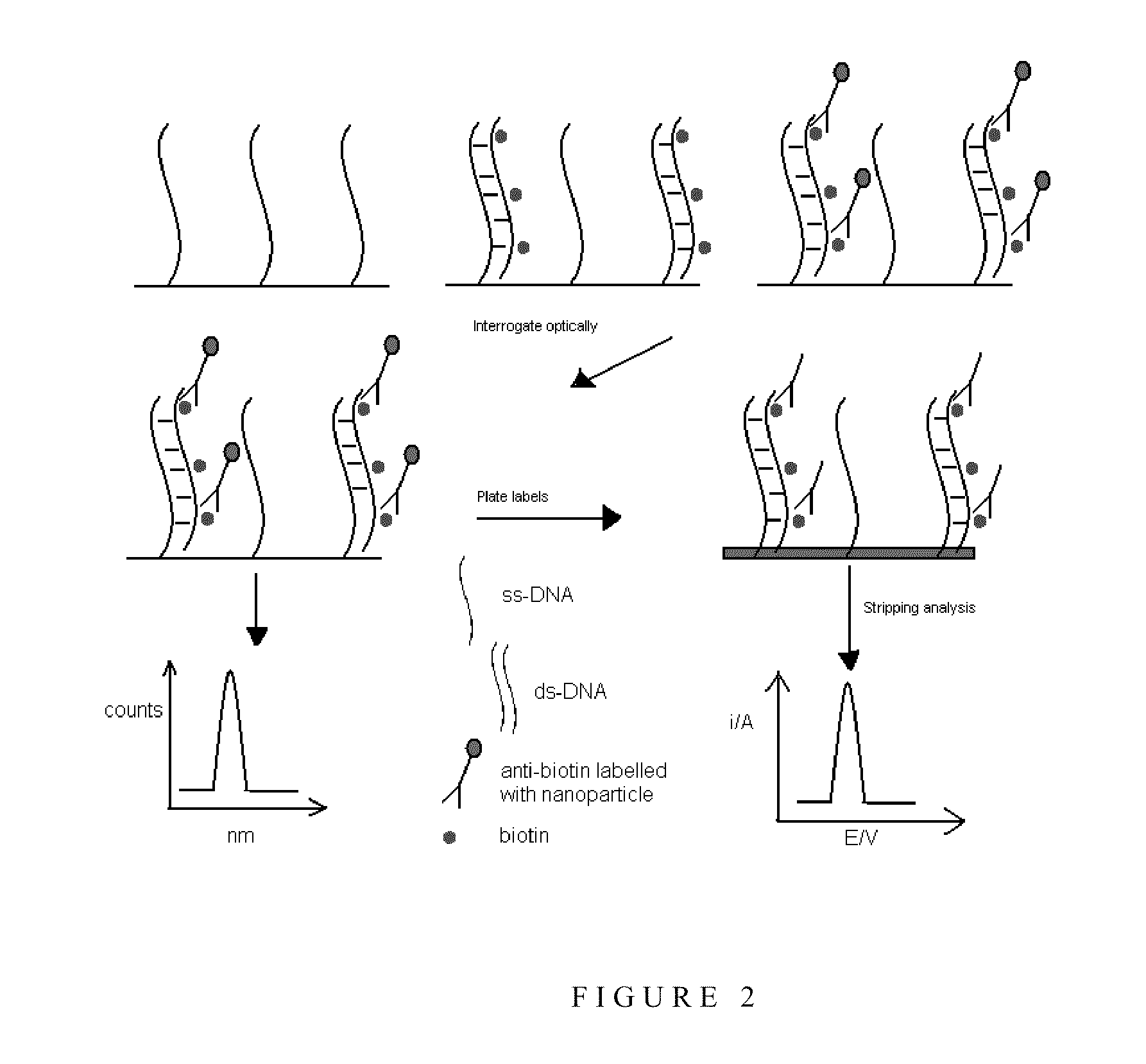Triple function electrodes
- Summary
- Abstract
- Description
- Claims
- Application Information
AI Technical Summary
Benefits of technology
Problems solved by technology
Method used
Image
Examples
example 1
Labelling DNA Analyte with Nanoparticle
[0120]RNA is reverse transcribed, incorporating a nucleotide labelled with a nanoparticle, according to conventional techniques.
example 2
Optical and Electrochemical Detection
[0121]Labels are excited with light of a given wavelength, and their emission is detected at a predetermined wavelength, according to conventional methods.
[0122]Electrochemical detection is then carried out on the labelled analyte from the optical detection method. The labelled analyte is dissolved in an acidic solution. Electrodes are inserted into the solution and a deposition potential of −0.8 V is applied. After a deposition time of two minutes a second potential of +1.2 V is applied to oxidise the deposited nanoparticles. Electrochemical currents are recorded and integrated to give the charge passed in each process, which determines the amount of deposited nanoparticles.
[0123]In the following Example, the effect on hybridization efficiency of applying the AC fields used in the invention was investigated by electrochemical impedance spectroscopy (EIS) and fluorescence detection.
example 3
Effect on Hybridization Efficiency of Applying the AC Fields Investigated by Electrochemical Impedance Spectroscopy (EIS) and Fluorescence Detection
Protocols
[0124]Two samples were investigated: Fluorescently labelled 1 μm polystyrene beads and Qdot 605-streptavidin-conjugates. The 1 μm diameter polystyrene beads were obtained from Invitrogen. 100 μL of the 2% bead solution was diluted with 4.9 ml of distilled water. A 1 nM solution of Qdot was also prepared in distilled water.
[0125]Prior to the experiment, an electrode control was performed by measuring the impedance of the interdigitated electrodes (IDE). This was done in a solution of 10 mM [Fe(CN)6]3- / 4- by applying a 10 mV rms amplitude voltage at frequencies between 1 MHz and 0.1 Hz to the electrode with a potentiostat. The characteristic semi-circle observed (FIG. 5) confirmed that both IDE electrodes and connections were properly working.
[0126]After emptying the flow cell and thoroughly cleaning the electrodes with distilled ...
PUM
| Property | Measurement | Unit |
|---|---|---|
| Time | aaaaa | aaaaa |
| Time | aaaaa | aaaaa |
| Time | aaaaa | aaaaa |
Abstract
Description
Claims
Application Information
 Login to View More
Login to View More - R&D
- Intellectual Property
- Life Sciences
- Materials
- Tech Scout
- Unparalleled Data Quality
- Higher Quality Content
- 60% Fewer Hallucinations
Browse by: Latest US Patents, China's latest patents, Technical Efficacy Thesaurus, Application Domain, Technology Topic, Popular Technical Reports.
© 2025 PatSnap. All rights reserved.Legal|Privacy policy|Modern Slavery Act Transparency Statement|Sitemap|About US| Contact US: help@patsnap.com



